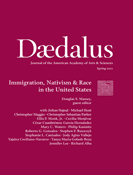By The University of Washington, Center for Human Rights
As the United States enters the height of the 2024 electoral season, a familiar pattern is at the forefront of campaign rhetoric: Democrats and Republicans alike declare themselves ever tougher on “the border,” making claims about “record” numbers—of arrests, deportations, border crossings—to bolster their arguments. The deep politicization of immigration policy provides incentives for the data to be used misleadingly by both sides. In fact, the reality of how immigration policy is carried out is more complex: against the backdrop of shifting local and national policies, raw numbers do not necessarily capture what is happening on the ground in actual communities, and may in fact obscure our understanding of the human rights implications of immigration enforcement. This report dives into the question of what shifting trends in immigration enforcement – nationally and locally – mean for communities here in the Pacific Northwest (PNW).1 Drawing on various collections of data from the Department of Homeland Security (DHS), including some datasets we release here for the first time, as well as on data from immigration courts and insights from immigrant-serving organizations, we examine three central questions: • How is immigration enforcement happening in the PNW? • How does our region’s experience compare to national trends? • What are the implications of these trends for human rights? We find that recent changes in state and local In this report, we refer to the “Pacific Northwest” or “PNW” as shorthand for the states of Oregon and Washington. These two states, plus Alaska, make up ICE’s “Seattle Area of Responsibility.” Because there is comparatively little immigration enforcement in Alaska, we do not address the circumstances in that state here. policy have contributed to important gains for migrant justice here in the PNW, many of which are highlighted in our recent report “Paths to Compliance: The Effort to Protect Immigrant Rights in Washington State”. This is reflected in changing arrest patterns across the PNW: whereas in past years, local and state law enforcement helped channel migrants into the custody of US Immigration and Customs Enforcement (ICE) and Customs and Border Protection (CBP), in the wake of “sanctuary state” legislation in Oregon and Washington, this happens much less frequently. And while ICE officials warned that they would compensate for curtailed collaboration in sanctuary jurisdictions by conducting more “at large” arrests on the streets and in communities, this does not appear to have been the case in recent years. Instead, Biden administration policies have attempted to alleviate bottlenecks at the US/ Mexico border by shifting the processing of new arrivals to the interior of the country and opening up new pathways for some migrants seeking asylum. For the most part, the growing enforcement numbers we have seen in the PNW reflect this, as migrants arriving here from the southern border are arrested at subsequent check-ins while following instructions from CBP and ICE, rather than in community raids. This is not to suggest that enforcement has been lax. Quite the contrary: recently-arrived migrants, many of them families with small children, and from communities with fewer established support networks in the PNW, face dire conditions and deep challenges defending their rights. And although reports of workplace raids or community-based arrests appear to have waned, such practices could return under a more overtly repressive administration; thanks to DHS’ growing use of public and private databases, tracking technologies, and digital detention, data on migrant communities is readily available to ICE and CBP, here as elsewhere in the country. At the same time, analysis of court data shows that in fact, outcomes of immigration court cases brought in Washington and Oregon are markedly worse than the national average. This means that although our communities have taken important steps to protect the rights of immigrants, there is no firewall between the “progressive” PNW and national anti-immigrant practices. The border is, in this sense, everywhere: our neighbors continue to be separated from their families in our courts, held under abysmal conditions in ICE detention, and deported through our airports; in some ways, in fact, migrants fare worse here than in other parts of the country. We have a lot of work to be done before the PNW can truly consider itself a “sanctuary” for immigrants.
Seattle: The University of Washington Center for Human Rights 2024. 24[p.





















